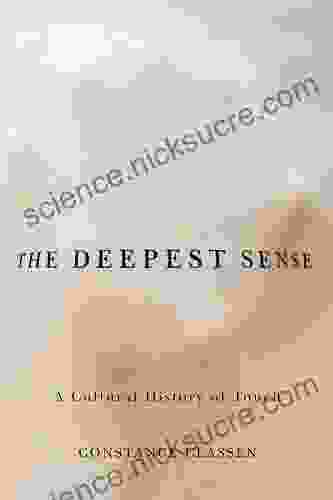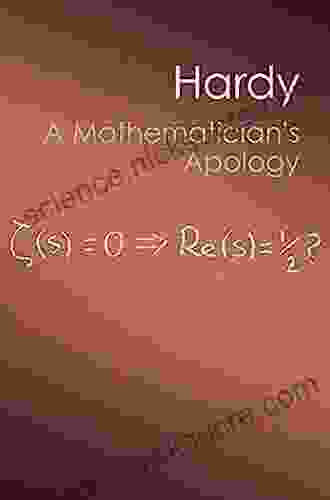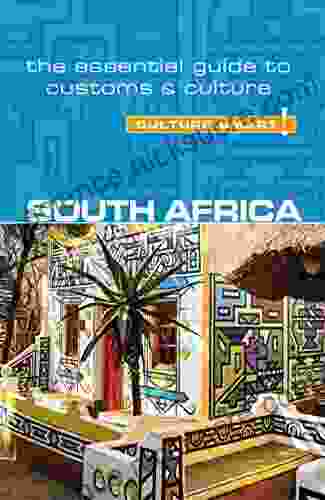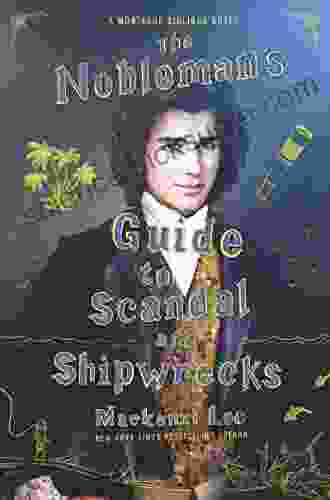A Comprehensive Exploration of the Cultural History of Touch Studies in Sensory History

Touch is a fundamental sense that plays a crucial role in our perception of the world and our interactions with it. It is through touch that we experience the physicality of our surroundings, connect with others, and navigate our daily lives. Despite its importance, the study of touch has historically been overshadowed by the focus on other senses, such as vision and hearing. In recent decades, however, there has been a growing interest in touch studies, leading to significant advancements in our understanding of this complex and multifaceted sense.
4.4 out of 5
| Language | : | English |
| File size | : | 3404 KB |
| Text-to-Speech | : | Enabled |
| Screen Reader | : | Supported |
| Enhanced typesetting | : | Enabled |
| Word Wise | : | Enabled |
| Print length | : | 258 pages |
This article delves into the cultural history of touch studies, providing a comprehensive overview of the evolution of research on the sense of touch, its significance in human experience, and its impact on sensory history. From ancient philosophies to modern neuroscience, we will explore the multifaceted nature of touch, its cultural constructions, and its role in shaping our understanding of the world.
The Sense of Touch in Ancient and Medieval Philosophy
The earliest philosophical reflections on touch can be traced back to ancient Greece. Aristotle, in his treatise "On the Soul," argued that touch is the most basic and essential sense, providing us with direct knowledge of the physical world. He believed that touch is mediated by a substance called "pneuma," which flows from the brain to the skin, enabling us to perceive the qualities of objects, such as their temperature, texture, and shape.
In medieval Europe, touch continued to be regarded as a fundamental sense, but its significance was often overshadowed by the emphasis on vision and hearing. The Christian tradition, with its focus on the afterlife and spiritual salvation, tended to devalue the physical senses, including touch. However, some medieval thinkers, such as Thomas Aquinas, recognized the importance of touch in human experience and argued that it plays a vital role in our understanding of the world and our interactions with others.
The Renaissance and the Rediscovery of Touch
The Renaissance witnessed a renewed interest in the study of the human body and the senses. Humanists and anatomists began to dissect cadavers and study the nervous system, leading to a deeper understanding of the physiology of touch. Artists such as Leonardo da Vinci depicted the human body with unprecedented anatomical accuracy, capturing the subtle movements and gestures that convey touch and emotion.
This period also saw the emergence of new philosophical perspectives on touch. René Descartes, in his influential work "Meditations on First Philosophy," argued that touch is the only sense that can provide us with certain knowledge of the external world. He believed that touch is mediated by a mechanical process involving the transmission of vibrations from objects to our skin.
The Enlightenment and the Rise of Empiricism
The Enlightenment brought with it a shift towards empiricism and the scientific study of the senses. Philosophers such as John Locke and David Hume argued that all knowledge is derived from experience, and that touch plays a crucial role in our acquisition of knowledge about the world. They believed that touch provides us with information about the size, shape, and texture of objects, and that it is essential for our understanding of space and time.
Physicists and physiologists also made significant contributions to the study of touch during this period. Ernst Heinrich Weber, a German physiologist, conducted pioneering experiments on the sensitivity of the skin to touch, establishing the concept of "two-point discrimination." His work laid the foundation for the field of sensory psychology, which would later become a major area of research in touch studies.
The Nineteenth Century and the Birth of Modern Touch Studies
The nineteenth century witnessed the birth of modern touch studies as a distinct field of scientific inquiry. Physiologists such as Johannes Müller and Ewald Hering conducted extensive research on the physiology of touch, identifying different types of touch receptors in the skin and mapping their distribution across the body. This led to a better understanding of the neural mechanisms underlying touch perception.
Psychologists also began to study the psychological aspects of touch, exploring the role of touch in perception, cognition, and emotion. Wilhelm Wundt, the founder of experimental psychology, conducted experiments on the perception of touch, including the effects of temperature and pressure on our ability to discriminate between different objects.
The Twentieth Century and the Expansion of Touch Research
The twentieth century saw a dramatic expansion of touch research, with advancements in both physiology and psychology. Neurologists such as Charles Sherrington and Edgar Adrian identified the specific neural pathways involved in touch perception, providing a more complete understanding of the brain's processing of tactile information.
Psychologists continued to explore the cognitive and emotional dimensions of touch. Harry Harlow's work on infant monkeys demonstrated the importance of touch for social and emotional development, showing that monkeys deprived of touch exhibited severe behavioral problems. Other researchers investigated the role of touch in communication, pain perception, and the experience of embodiment.
Contemporary Touch Studies: Embodiment and Cultural Perspectives
In recent decades, touch studies have taken a more interdisciplinary turn, incorporating insights from anthropology, cultural studies, and the arts. Researchers have begun to explore the cultural construction of touch, examining how different societies and cultures perceive and experience touch. They have also investigated the role of touch in embodied cognition, exploring how our sense of touch shapes our understanding of the world and our place within it.
Contemporary touch studies have also been influenced by the development of new technologies, such as haptics and virtual reality. Haptic technologies allow us to create and interact with virtual touch sensations, opening up new possibilities for research on the sense of touch. Virtual reality, on the other hand, enables us to immerse ourselves in virtual environments and experience touch in ways that were previously impossible.
The cultural history of touch studies is a rich and fascinating one, spanning from ancient philosophical inquiries to modern scientific research. Throughout history, touch has been recognized as a fundamental sense that plays a crucial role in our perception of the world, our interactions with others, and our understanding of ourselves. Contemporary touch studies continue to explore the multifaceted nature of touch, shedding light on its cultural constructions, cognitive dimensions, and embodied experiences. As we continue to delve deeper into the sense of touch, we gain a greater appreciation for its complexity and significance, and we come to recognize the profound impact it has on all aspects of human life.
4.4 out of 5
| Language | : | English |
| File size | : | 3404 KB |
| Text-to-Speech | : | Enabled |
| Screen Reader | : | Supported |
| Enhanced typesetting | : | Enabled |
| Word Wise | : | Enabled |
| Print length | : | 258 pages |
Do you want to contribute by writing guest posts on this blog?
Please contact us and send us a resume of previous articles that you have written.
 Fiction
Fiction Non Fiction
Non Fiction Romance
Romance Mystery
Mystery Thriller
Thriller SciFi
SciFi Fantasy
Fantasy Horror
Horror Biography
Biography Selfhelp
Selfhelp Business
Business History
History Classics
Classics Poetry
Poetry Childrens
Childrens Young Adult
Young Adult Educational
Educational Cooking
Cooking Travel
Travel Lifestyle
Lifestyle Spirituality
Spirituality Health
Health Fitness
Fitness Technology
Technology Science
Science Arts
Arts Crafts
Crafts DIY
DIY Gardening
Gardening Petcare
Petcare Massad Ayoob
Massad Ayoob Noel St Clair
Noel St Clair Kareem Abdul Jabbar
Kareem Abdul Jabbar Celeste Jones
Celeste Jones Terry Funk
Terry Funk Jane Bottomley
Jane Bottomley Michael Gray
Michael Gray Dmitry Zinoviev
Dmitry Zinoviev Bill Parisi
Bill Parisi Robert E Stake
Robert E Stake Elaine Howard Ecklund
Elaine Howard Ecklund Dusty Rhodes
Dusty Rhodes Habeeb Quadri
Habeeb Quadri Skeleton Steve
Skeleton Steve Frank E Harrell Jr
Frank E Harrell Jr Alan S Kaufman
Alan S Kaufman Cindy Hudson
Cindy Hudson Amanda Ford
Amanda Ford Bradley Efron
Bradley Efron Isabella Morris
Isabella Morris Ron L Deal
Ron L Deal Sam J Fires
Sam J Fires Mike Warren
Mike Warren Leif K Karlsen
Leif K Karlsen Truman Everts
Truman Everts Lee Carroll
Lee Carroll Gina Guddat
Gina Guddat Teresa Mccallum
Teresa Mccallum Aiva Books
Aiva Books Alan Porter
Alan Porter Jack Nicklaus
Jack Nicklaus Doug Gelbert
Doug Gelbert Jacob K Olupona
Jacob K Olupona Dennis Jarecke
Dennis Jarecke Michael Freedland
Michael Freedland Jay H Lefkowitch
Jay H Lefkowitch Damon Lee
Damon Lee Peter Hathaway Capstick
Peter Hathaway Capstick Jim Steenburgh
Jim Steenburgh Robin Mckinley
Robin Mckinley Kim Stanley Robinson
Kim Stanley Robinson Robert M Emerson
Robert M Emerson Joe Berardi
Joe Berardi Markus Rex
Markus Rex Al Yellon
Al Yellon Michael W King
Michael W King Brandy Roon
Brandy Roon Barbara Scott
Barbara Scott Aitzaz Imtiaz
Aitzaz Imtiaz John Bird
John Bird Julie Bradley
Julie Bradley Jamie Baulch
Jamie Baulch Tod E Bolsinger
Tod E Bolsinger Jonathan Gottschall
Jonathan Gottschall Gillian Gill
Gillian Gill John Irving
John Irving Olivia Gentile
Olivia Gentile Matthew Mcbee
Matthew Mcbee Gary Smith
Gary Smith Sheila Barton
Sheila Barton Emily Harris Adams
Emily Harris Adams Yang Jwing Ming
Yang Jwing Ming Arnold Haultain
Arnold Haultain Jacqueline Tourville
Jacqueline Tourville Nilakantasrinivasan J Neil
Nilakantasrinivasan J Neil Ahmed Osman
Ahmed Osman Grace Lebow
Grace Lebow Ainsley Arment
Ainsley Arment Pantea Kalhor
Pantea Kalhor Helena Clare
Helena Clare David Roberts
David Roberts Al Ristori
Al Ristori Joyce Burkhalter Flueckiger
Joyce Burkhalter Flueckiger Anna Hickey Moody
Anna Hickey Moody Alan S Gurman
Alan S Gurman Sir Edmund Hillary
Sir Edmund Hillary George Plimpton
George Plimpton Takuan Soho
Takuan Soho Vasilis Konstantinos Giontzis
Vasilis Konstantinos Giontzis Aphra Behn
Aphra Behn Bruce Lee
Bruce Lee Daniel C Okpara
Daniel C Okpara M K Hume
M K Hume Mel Thompson
Mel Thompson Micky Ward
Micky Ward Albert Einstein
Albert Einstein Tonya Johnston
Tonya Johnston Jordon Greene
Jordon Greene Ilan Dvir
Ilan Dvir Mariam N Ottimofiore
Mariam N Ottimofiore Charles J Thayer
Charles J Thayer Timm Woods
Timm Woods Janet Houser
Janet Houser John H Moore
John H Moore Mark Booth
Mark Booth John Leo
John Leo Gordon R Dickson
Gordon R Dickson Lex Croucher
Lex Croucher Rick Bass
Rick Bass Don Casey
Don Casey Taquetta Baker
Taquetta Baker Jacqueline Fitzpatrick
Jacqueline Fitzpatrick S Connolly
S Connolly Percy Boomer
Percy Boomer David King
David King Bob Plott
Bob Plott Zondervan
Zondervan Samuel N Rosenberg
Samuel N Rosenberg Martin Erwig
Martin Erwig Chris Bowers
Chris Bowers Antipodean Writer
Antipodean Writer Peg Tyre
Peg Tyre Kardas Publishing
Kardas Publishing Lj Andrews
Lj Andrews Juno Roche
Juno Roche Beata Bliss Lewis Md
Beata Bliss Lewis Md Jill Homer
Jill Homer Susan B Lovejoy
Susan B Lovejoy Alan Garner
Alan Garner E A Koetting
E A Koetting Cynthia Clumeck Muchnick
Cynthia Clumeck Muchnick Lisa Kenney
Lisa Kenney The Rogue Hypnotist
The Rogue Hypnotist Hannah Ewens
Hannah Ewens Linda G Morris
Linda G Morris Catherine Belknap
Catherine Belknap Christos A Djonis
Christos A Djonis Bettina Gordon Wayne
Bettina Gordon Wayne Joanne Webb
Joanne Webb Natazha Raine O Connor
Natazha Raine O Connor Linda Welters
Linda Welters Zita West
Zita West Mike Martin
Mike Martin Terry Breverton
Terry Breverton Angelina Wilson
Angelina Wilson Jenni Hicks
Jenni Hicks Christopher Hellman
Christopher Hellman Dr David Geier
Dr David Geier Robert L Kelly
Robert L Kelly George Buehler
George Buehler Sonia Nazario
Sonia Nazario Rehana Jawadwala
Rehana Jawadwala Carl Gustav Jung
Carl Gustav Jung Bobby Flay
Bobby Flay Tim Gallagher
Tim Gallagher John T Hansen
John T Hansen Deitra Leonard Lowdermilk
Deitra Leonard Lowdermilk Kiku Hughes
Kiku Hughes Helen Palmer
Helen Palmer Marcus Chown
Marcus Chown Martin J Pring
Martin J Pring Pallas Snider
Pallas Snider Francesca Lia Block
Francesca Lia Block Timothy C Smith
Timothy C Smith Judith Garrard
Judith Garrard Vernon Coleman
Vernon Coleman Michael Casey
Michael Casey Original Edition Kindle Edition
Original Edition Kindle Edition Thomas Metzinger
Thomas Metzinger Matt Mosher
Matt Mosher Andre Agassi
Andre Agassi Kerstin Gier
Kerstin Gier Betsy Tobin
Betsy Tobin Noha Mellor
Noha Mellor Paramahansa Yogananda
Paramahansa Yogananda Kevin B Shearer
Kevin B Shearer Amye Archer
Amye Archer Al Roker
Al Roker Mackenzi Lee
Mackenzi Lee Brenda Nathan
Brenda Nathan Laurie Pickard
Laurie Pickard Jane P Gardner
Jane P Gardner Aidan Dodson
Aidan Dodson Jacqueline Church Simonds
Jacqueline Church Simonds Donna Morang
Donna Morang Morgan Lyle
Morgan Lyle Paul G Schempp
Paul G Schempp James Gleick
James Gleick Meredith Marsh
Meredith Marsh Hervey Garrett Smith
Hervey Garrett Smith J R Haseloff
J R Haseloff Peter Irvine
Peter Irvine Brian Mills
Brian Mills Louis Schubert
Louis Schubert Princess Her
Princess Her Edward A Tiryakian
Edward A Tiryakian Jessica Cunsolo
Jessica Cunsolo Bryon Powell
Bryon Powell Tina Dreffin
Tina Dreffin Franz Metcalf
Franz Metcalf Aidan Comerford
Aidan Comerford Alan Booth
Alan Booth Rene D Zweig
Rene D Zweig Larry Wasserman
Larry Wasserman Mykel Hawke
Mykel Hawke David Vine
David Vine Esther Parry
Esther Parry Kate Brian
Kate Brian Howard Greene
Howard Greene Matthew Sturm
Matthew Sturm Jerry Robeson
Jerry Robeson Amelia Mayer
Amelia Mayer Ndeye Labadens
Ndeye Labadens Akil Palanisamy
Akil Palanisamy Michael Sidgwick
Michael Sidgwick Florence Williams
Florence Williams Marsha Wenig
Marsha Wenig 12th Edition Kindle Edition
12th Edition Kindle Edition Saul Rip
Saul Rip Tom Shachtman
Tom Shachtman Andy Zipser
Andy Zipser Hiro Ainana
Hiro Ainana Janice Selekman
Janice Selekman Robert Heidler
Robert Heidler Howard Maxwell
Howard Maxwell Chris Vines
Chris Vines Hammad Fozi
Hammad Fozi Melissa Bashardoust
Melissa Bashardoust Scott Surovich
Scott Surovich Jay Annelli
Jay Annelli Roxy And Ben Dawson
Roxy And Ben Dawson Theodore P Jorgensen
Theodore P Jorgensen Ai Publishing
Ai Publishing Publishdrive Edition Kindle Edition
Publishdrive Edition Kindle Edition Bob Mayer
Bob Mayer Judy Jewell
Judy Jewell Al Owens
Al Owens Alan E Kazdin
Alan E Kazdin Alan E Sparks
Alan E Sparks John Feinstein
John Feinstein Jeff Maynard
Jeff Maynard Sara Hanover
Sara Hanover Alice Oseman
Alice Oseman Charlotte Markey
Charlotte Markey Thubten Chodron
Thubten Chodron Elizabeth Thompson
Elizabeth Thompson Michael Morpurgo
Michael Morpurgo Mark Goulston
Mark Goulston Bruce J Macfadden
Bruce J Macfadden Martin Rooney
Martin Rooney Craig Childs
Craig Childs Jay Speight
Jay Speight Suze Guillaume
Suze Guillaume Lingo Mastery
Lingo Mastery Edupan7 Publishing
Edupan7 Publishing Douglas G Altman
Douglas G Altman Jeanne Faulkner
Jeanne Faulkner Charles B White
Charles B White Clint Emerson
Clint Emerson Vanessa Ogle
Vanessa Ogle Christopher Gavigan
Christopher Gavigan Helen Hollick
Helen Hollick Peter Ballingall
Peter Ballingall Denise Alvarado
Denise Alvarado R A Salvatore
R A Salvatore Shaun Tomson
Shaun Tomson Sandy Lindsey
Sandy Lindsey David F Kelly
David F Kelly E Cheng
E Cheng Jeremy Miles
Jeremy Miles Alan Burdick
Alan Burdick Madeline Milne
Madeline Milne Al Marlowe
Al Marlowe Alan Murchison
Alan Murchison Gavin Francis
Gavin Francis Conor Daly
Conor Daly Howard Hill
Howard Hill Amelia Simmons
Amelia Simmons Alana Chernila
Alana Chernila Andrea Travillian
Andrea Travillian Alastair Humphreys
Alastair Humphreys Belinda Luscombe
Belinda Luscombe Trevor Lund
Trevor Lund Dan Dipiro
Dan Dipiro Clyde Fitch
Clyde Fitch Megan Gray Md
Megan Gray Md Kai Nacke
Kai Nacke Richard Pears
Richard Pears Kate Bettison
Kate Bettison Steven Horak
Steven Horak Snap Summaries
Snap Summaries Steven H Strogatz
Steven H Strogatz Emeran Mayer
Emeran Mayer Andrew Rowe
Andrew Rowe Alan Vermilye
Alan Vermilye S A Klopfenstein
S A Klopfenstein Toby Wilkinson
Toby Wilkinson Jakob Tanner
Jakob Tanner Harriet Brown
Harriet Brown James F Boswell
James F Boswell Amy Edelstein
Amy Edelstein Erin Lovelace
Erin Lovelace Michael D Rich
Michael D Rich Jane Poynter
Jane Poynter Mark Occhilupo
Mark Occhilupo Rebekah Sack
Rebekah Sack J Zoltan
J Zoltan Steven Trimble
Steven Trimble Jon Tyson
Jon Tyson Vishwesh Bhatt
Vishwesh Bhatt Orson Scott Card
Orson Scott Card Al Barkow
Al Barkow Eden O Neill
Eden O Neill James Willard Schultz
James Willard Schultz Dave Heller
Dave Heller Daphne Rose Kingma
Daphne Rose Kingma George Knudson
George Knudson Andrew Blum
Andrew Blum Robert A Sadowski
Robert A Sadowski Aimee Aristotelous
Aimee Aristotelous Benjamin Johnston
Benjamin Johnston Aileen Nielsen
Aileen Nielsen Alan Shipnuck
Alan Shipnuck Dave Whitson
Dave Whitson David Crabtree
David Crabtree Gary B Ferngren
Gary B Ferngren Rosemarie Anderson
Rosemarie Anderson Mark Drolsbaugh
Mark Drolsbaugh Po Bronson
Po Bronson Dawn Sakamoto Paiva
Dawn Sakamoto Paiva Billy Walsh
Billy Walsh Kidada Jones
Kidada Jones Alex Light
Alex Light Caitlin Zaloom
Caitlin Zaloom Will Storr
Will Storr Constance Classen
Constance Classen Kristine Barnett
Kristine Barnett Cat Warren
Cat Warren David D Burns
David D Burns Bill Walker
Bill Walker Aidan Chambers
Aidan Chambers Mista Nove
Mista Nove Graham Bower
Graham Bower Nick Hughes
Nick Hughes Nassim Nicholas Taleb
Nassim Nicholas Taleb Douglas Noll
Douglas Noll Dimitri Loose
Dimitri Loose I Johnson
I Johnson Aileen Erin
Aileen Erin Michael Domican
Michael Domican Thomas Kurz
Thomas Kurz Mendocino Press
Mendocino Press Rebecca Jones
Rebecca Jones David Jason
David Jason Akwaeke Emezi
Akwaeke Emezi Steve Michalik
Steve Michalik Carla Schroder
Carla Schroder Layla Moon
Layla Moon Stephanie Izard
Stephanie Izard Michael Shermer
Michael Shermer Nina Lacour
Nina Lacour Sarah Hendrickx
Sarah Hendrickx Chris Klug
Chris Klug Erin Ekins
Erin Ekins Sara Wickham
Sara Wickham Samuel Carbaugh
Samuel Carbaugh Kiersten White
Kiersten White Dr Joseph Parent
Dr Joseph Parent John Riley
John Riley Alan Graham
Alan Graham Josh Kilmer Purcell
Josh Kilmer Purcell Alan Margot
Alan Margot Lo Bosworth
Lo Bosworth Alan Lawrence Sitomer
Alan Lawrence Sitomer Roy Dittmann
Roy Dittmann Anthonissa Moger
Anthonissa Moger John Muir
John Muir W E Fairbairn
W E Fairbairn Alice Scordato
Alice Scordato Michal Stawicki
Michal Stawicki Leigh Sales
Leigh Sales Mark Harris
Mark Harris Ged Jenkins Omar
Ged Jenkins Omar Len Sperry
Len Sperry Anders Halverson
Anders Halverson Kevin Hunter
Kevin Hunter Ken Schultz
Ken Schultz Mary Basick
Mary Basick Jonathan White
Jonathan White Michael Miller
Michael Miller Alan R Hall
Alan R Hall Arthur Fleischmann
Arthur Fleischmann Al Strachan
Al Strachan Katharine Graves
Katharine Graves Eddy Starr Ancinas
Eddy Starr Ancinas Christopher Willard
Christopher Willard Christopher Scordo
Christopher Scordo Bianca Smith
Bianca Smith William Harding
William Harding Miles Mckenna
Miles Mckenna Jessica Cornwell
Jessica Cornwell Juliet Marillier
Juliet Marillier Lisa Newton
Lisa Newton Deborah Harkness
Deborah Harkness Ann Hagedorn
Ann Hagedorn William Foote Whyte
William Foote Whyte Lisa Marasco
Lisa Marasco Frances E Jensen
Frances E Jensen Gail Tully
Gail Tully Donald Woods Winnicott
Donald Woods Winnicott Rose Lynn Fisher
Rose Lynn Fisher Gill Rapley
Gill Rapley Nick Lyons
Nick Lyons Alfred S Posamentier
Alfred S Posamentier Jon Emmett
Jon Emmett Stephen M Camarata
Stephen M Camarata Sophia Joy
Sophia Joy Jan Smith
Jan Smith Patrick O Sullivan
Patrick O Sullivan Anahad O Connor
Anahad O Connor Dorothy H Crawford
Dorothy H Crawford Steve Moore
Steve Moore Alan Rouse
Alan Rouse Andrew Jamieson
Andrew Jamieson Pavel Tsatsouline
Pavel Tsatsouline Margaret J Wheatley
Margaret J Wheatley Courtney Macavinta
Courtney Macavinta William A Kaplin
William A Kaplin Satya Sundar Sethy
Satya Sundar Sethy Melinda Rushe
Melinda Rushe Kerry Diamond
Kerry Diamond Alan Gelb
Alan Gelb James A Michener
James A Michener George M Fredrickson
George M Fredrickson Rob Casey
Rob Casey Al Pasha
Al Pasha Dean Burnett
Dean Burnett Rand Cardwell
Rand Cardwell Gary R Varner
Gary R Varner Margit Ystanes
Margit Ystanes Mike Rothschild
Mike Rothschild Celeste Headlee
Celeste Headlee Gordon H Orians
Gordon H Orians Aileen Evans
Aileen Evans Anne Dachel
Anne Dachel Marc M Triola
Marc M Triola Martin Luther King Jr
Martin Luther King Jr Kelly Jensen
Kelly Jensen Alaina Talboy
Alaina Talboy Dylan Alcott
Dylan Alcott Stephen Wolfram
Stephen Wolfram Gayle Peterson
Gayle Peterson Alana Mclaren
Alana Mclaren Aja Raden
Aja Raden John J Miller
John J Miller Erica Westly
Erica Westly Lauren Blackwood
Lauren Blackwood Al Sweigart
Al Sweigart Jessica Battilana
Jessica Battilana Shoshana Levin Fox
Shoshana Levin Fox We Fairbairn
We Fairbairn Alan Lightman
Alan Lightman Arnold Yates
Arnold Yates George E Andrews
George E Andrews George Monbiot
George Monbiot Lexie Scott
Lexie Scott Kevin Williams
Kevin Williams United States Government Us Marine Corps
United States Government Us Marine Corps Vera Nazarian
Vera Nazarian Ken Denmead
Ken Denmead Shing Tung Yau
Shing Tung Yau Alan C Acock
Alan C Acock Al Macy
Al Macy Hope Smith
Hope Smith Jill Stamm
Jill Stamm Robert Macfarlane
Robert Macfarlane Joe Clement
Joe Clement Dr Guy Leschziner
Dr Guy Leschziner Carol Tuttle
Carol Tuttle Andy Adams
Andy Adams Al Desetta M A
Al Desetta M A Farlex International
Farlex International Gary Player
Gary Player Terry L Duran
Terry L Duran Lecile Harris
Lecile Harris Douglas T Hall
Douglas T Hall Alan Watts
Alan Watts Contractor Education Inc
Contractor Education Inc Bryan Mann
Bryan Mann Jackson Katz
Jackson Katz Collins Easy Learning
Collins Easy Learning Gregory J Davenport
Gregory J Davenport Tenth Edition Revised Kindle Edition
Tenth Edition Revised Kindle Edition James Witts
James Witts Jerry Robertson
Jerry Robertson Spencer Wells
Spencer Wells Alan Hearnshaw
Alan Hearnshaw Nancy Hughes
Nancy Hughes David A Sousa
David A Sousa Bill Friedrich
Bill Friedrich Anne Enright
Anne Enright Molly Absolon
Molly Absolon Harold Klemp
Harold Klemp Barbara Oehlberg
Barbara Oehlberg Magnus Thollander
Magnus Thollander G E R Lloyd
G E R Lloyd Nicholas Romanov
Nicholas Romanov Jay Revell
Jay Revell Letisha Galloway
Letisha Galloway Joe Bertagna
Joe Bertagna Penney Peirce
Penney Peirce Karen Levin Coburn
Karen Levin Coburn G H Hardy
G H Hardy Wayne Stewart
Wayne Stewart
Light bulbAdvertise smarter! Our strategic ad space ensures maximum exposure. Reserve your spot today!
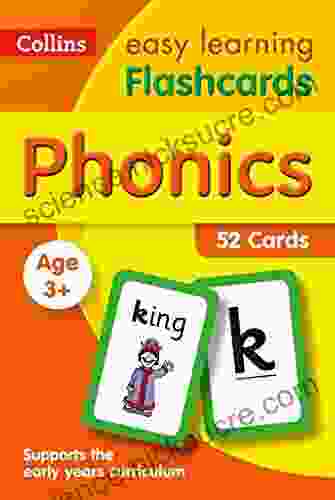
 Kazuo IshiguroPrepare for Preschool with Ease: Home Learning with Collins Easy Learning...
Kazuo IshiguroPrepare for Preschool with Ease: Home Learning with Collins Easy Learning... Jake CarterFollow ·11.4k
Jake CarterFollow ·11.4k Miguel NelsonFollow ·4.2k
Miguel NelsonFollow ·4.2k Michael ChabonFollow ·7.7k
Michael ChabonFollow ·7.7k Isaac BellFollow ·16.9k
Isaac BellFollow ·16.9k Ibrahim BlairFollow ·9.6k
Ibrahim BlairFollow ·9.6k Jordan BlairFollow ·3.4k
Jordan BlairFollow ·3.4k Blake KennedyFollow ·8.2k
Blake KennedyFollow ·8.2k Carl WalkerFollow ·9.7k
Carl WalkerFollow ·9.7k
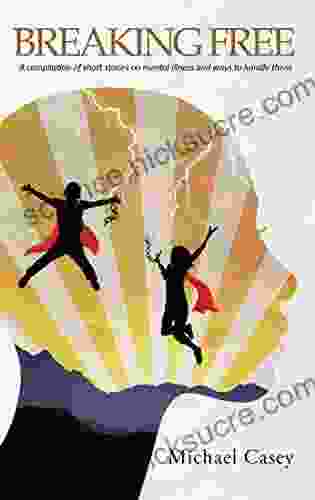
 Deacon Bell
Deacon BellCompilation of Short Stories on Mental Illness and Ways...
Mental illness is a serious issue that affects...
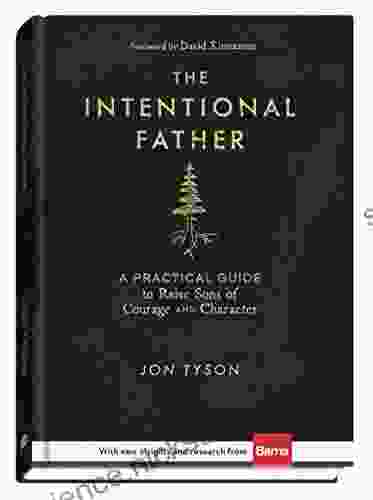
 Jonathan Hayes
Jonathan HayesThe Practical Guide to Raising Courageous and...
As parents, we all want...
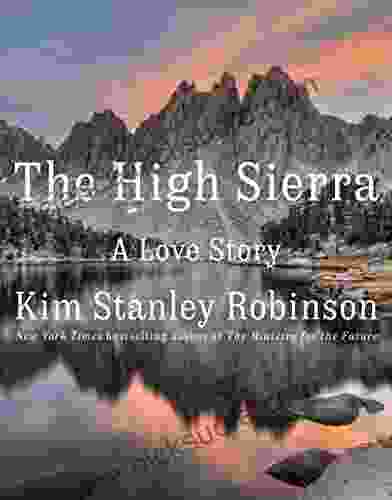
 Carlos Fuentes
Carlos FuentesA Journey to Remember: The High Sierra Love Story of...
Prologue: A Wilderness Encounter Beneath...
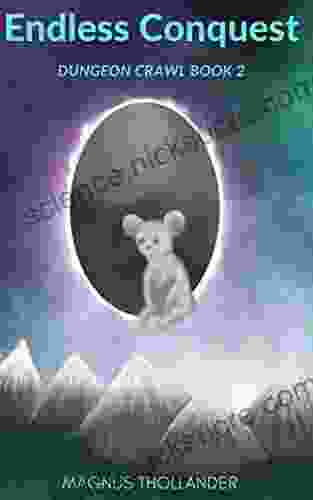
 Douglas Foster
Douglas FosterEndless Conquest: Embark on an Immersive Dungeon Crawl in...
Endless Conquest is a captivating LitRPG...
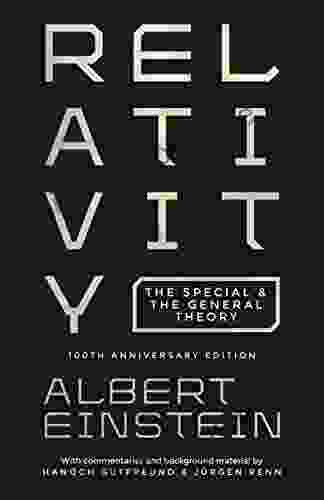
 Caleb Long
Caleb LongThe Special and the General Theory 100th Anniversary...
The year 2015 marks a...
4.4 out of 5
| Language | : | English |
| File size | : | 3404 KB |
| Text-to-Speech | : | Enabled |
| Screen Reader | : | Supported |
| Enhanced typesetting | : | Enabled |
| Word Wise | : | Enabled |
| Print length | : | 258 pages |


